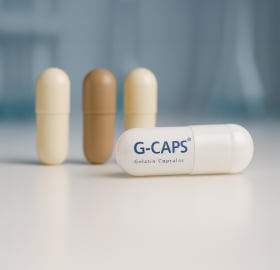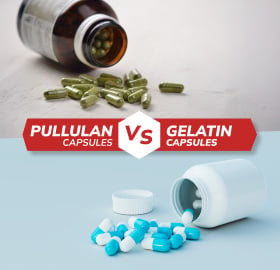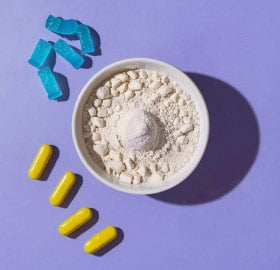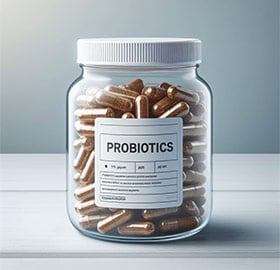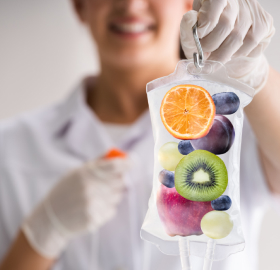As we have written about before (See “Probiotics vs. Prebiotics: What is the Difference?”), probiotics are live microorganisms that support gut health by helping to maintain beneficial bacteria in the gut and create microbiome balance. While probiotics are found in some foods, many people choose to take dietary supplements to ensure they get the dosage and strains that they need.
Producing probiotic dietary supplements can be challenging
To be effective, the live microorganisms in probiotic dietary supplements must still be alive when they reach the intestine. This makes producing these nutraceuticals challenging. First, you need to ensure that the production process does not damage the microorganisms, which then need to stay alive throughout the product’s stated shelf life. Finally, probiotics must survive the harsh environment of the stomach, moving on to the intestine before they are killed by the stomach’s acids.
Choosing from among a variety of potential dosage forms is therefore an extremely important decision when bringing a probiotic to market. Of all the available options, which is most effective?
The most effective option is delayed-release capsules
The efficacy of probiotic capsules has been very well-studied, and encapsulation of probiotics “has been recognized as an effective way to stabilize them in their dried form.” Because capsules create a physical barrier, the live microorganisms are protected from adverse conditions. Probiotic capsules have been shown to perform better than non-encapsulated probiotics overall.
When choosing empty capsules for probiotics, the best capsule solutions are those that are specifically designed not to disintegrate until they reach the intestine. This provides the drug delivery that probiotics require.
In a 2013 study of enteric-coated capsules, which are a form of delayed-release capsules, eight of the encapsulated but non-enteric-coated probiotic products examined showed limited gastrointestinal resistance, while five products showed no gastrointestinal survival at all. All four of the probiotic capsules in the study that were covered with an enteric coating showed a higher survival rate than the uncoated.
Since that study was completed, capsule delivery systems that use other technologies to achieve acid resistance, such as CapsCanada’s K-CAPS® Delayed-Release Capsules, have been developed.
K-CAPS® Delayed-Release Capsules are formulated so that the HPMC itself is acid-resistant. In addition, these delayed-release capsules are completely free of phthalates, making them appropriate for nutraceuticals. The use of acid-resistant HPMC provides a superior solution to enteric-coated capsules. This is because the enteric coating process, which is done after the empty capsules have been filled, can ruin the finished product. K-CAPS® Delayed-Release Capsules eliminate this risk, as well as the added time and expense of the enteric coating process.
Keep learning about supplement trends...
Probiotics vs. Prebiotics: What is the Difference?
Delayed Capsule Delivery for Probiotics
Nutraceutical Trends 2024
What about other dosage forms?
While probiotics are certainly being marketed in a wide variety of other dosage forms, there are issues associated with each of them…
• Gummy probiotics – Gummies in general continue to gain in popularity, as consumers enjoy their candy-like properties. Unfortunately, research into their effectiveness is still very limited.
That said, what we do know is that the high moisture content found in gummies can be detrimental to some antibiotic strains, such as lactobacilli and bifidobacteria. Exposure to heat during the production process can kill some of the microorganisms. Plus, gummies usually contain some form of sugar. Sugar feeds harmful gut bacteria, thus potentially counteracting any potential gut health benefit that the probiotic might provide.
• Tablet probiotics – Once the microorganisms become entrapped in the tablet matrix, they may receive some protection against the stomach’s harsh environment. However, the compression process used to make tablets can damage the cells, leading to a loss of viability and a failure of the therapy.
How about chewable tablets? These can be popular with consumers. Unfortunately, some of the added ingredients that are used to make chewables can harm the probiotics by increasing their exposure to moisture, thereby decreasing the microorganisms’ survival rates.
• Probiotic powders – Powders, by their nature, do not protect a formulation’s active ingredients from the body’s environment. In one study, only one of six powdered probiotic strains showed excellent gastrointestinal survival.
• Liquid probiotics (drops) – While liquids have been less well-studied, these also do not protect a formulation’s active ingredients from the body’s environment.
It should be noted that the best choice for non-encapsulated probiotics are soil-based probiotic strains, which generally come from the Bacillus genus.
Conclusion
If you are choosing a dosage format for your probiotic formulation, K-CAPS® Delayed-Release Capsules can be an ideal choice. To request samples reach out to your local CapsCanada Technical Representative.






